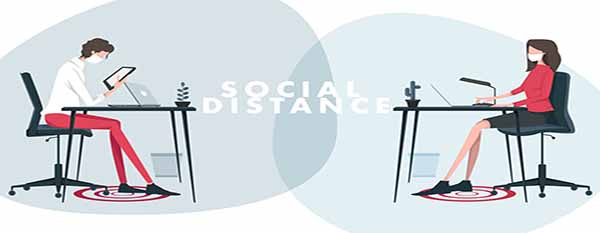The debate is on – Return to the office or continue the work at home experiment? There is no one right answer to this question, as every employer and employee is different. That said, a majority of organizations are contemplating the future and are beginning to discuss a “reentry plan” for employees in the office. Employers who are considering bringing employees back to the office must be thoughtful and deliberate in order to balance the needs of the employee, the murky, ever changing nature of COVID, and what the new office environment will look like and feel like. Make no mistake about it, we are not going back to the way it was.
Before opening the doors to your workplace and embarking on the “new normal,” make a plan for success! Revisit the membership on the COVID response team (whether it was ever formally designated or simply materialized) and assign a cross functional group of employees to contemplate what is needed and navigate the strategy. Will you require vaccinations? Will you rewrite your work at home policy? Is the current workspace appropriate moving forward? Does your employee handbook have the right policies in place?
Most importantly, what do your employees think? What is most concerning to them and what are they expecting? Consider conducting an employee survey before the planning begins to set the stage and ensure employee voices are heard and considered in the process.
Where to start? PREPARE THE PHYSICAL WORKSPACE
The easiest place to start your plan is to review and update the physical office space to ensure it will meet the needs of your employees moving forward. While essential workers have been “on the job” in the traditional sense throughout the pandemic, most likely, office workers have not been routinely in the office, and certainly not with significant occupancy.
- Be grounded in the numbers: Investigate the occupancy limits on buildings, offices, and common areas in your workplace. Be sure to limit those numbers appropriately as necessary to accommodate varying occupancy limits imposed by local and federal agencies.
- Clearly define who is working where with a seating chart. If sharing a workspace is necessary, ensure there is no overlap and that workspace cleaning requirements are clearly posted.
- Social Distancing – make sure desks and workstations are at least 6 feet apart and install plexiglass shields where necessary to provide employees a sense of security.
- Post occupancy limits in common spaces and bathrooms. Remove extra chairs to reinforce the occupancy limits.
- Revisit supply storage and availability and shared tools, such as copy machines. Be sure there are supplies readily available and limit a centralized supply closet. Work rooms that include copy machines and other tools that employees may share, should be monitored and cleaned regularly, with occupancy limits posted, instructions on cleaning, and plenty of cleaning supplies.
- PPE Availability: Ensure PPE is available throughout the workplace, including hand sanitizer, masks, Clorox wipes and latex gloves. Post PPE signage and reinforce expectations.
- Review the air quality in the workplace and upgrade filters.
- Consider walkways and traffic flow. Place space demarcations [tape or other marks] on floors in common areas to note social distancing requirements and consider “one way” hallways with clear signage.
Once the team has reviewed the workspace and made changes to improve the return to work experience, update the employees so they know progress is being made and the company is serious about planning and safety.
COVID resources available for your organization as you prepare for reentry into the workplace include:
- SHRM COVID Back to Work Checklist
- National Safety Council – A.F.E.R. (Safe Actions For Employee Returns)
- CDC – Returning to Work
- OSHA Guidance on Returning to Work
- Colorado Department of Labor and Employment – Return to Work Guidance for Workers

